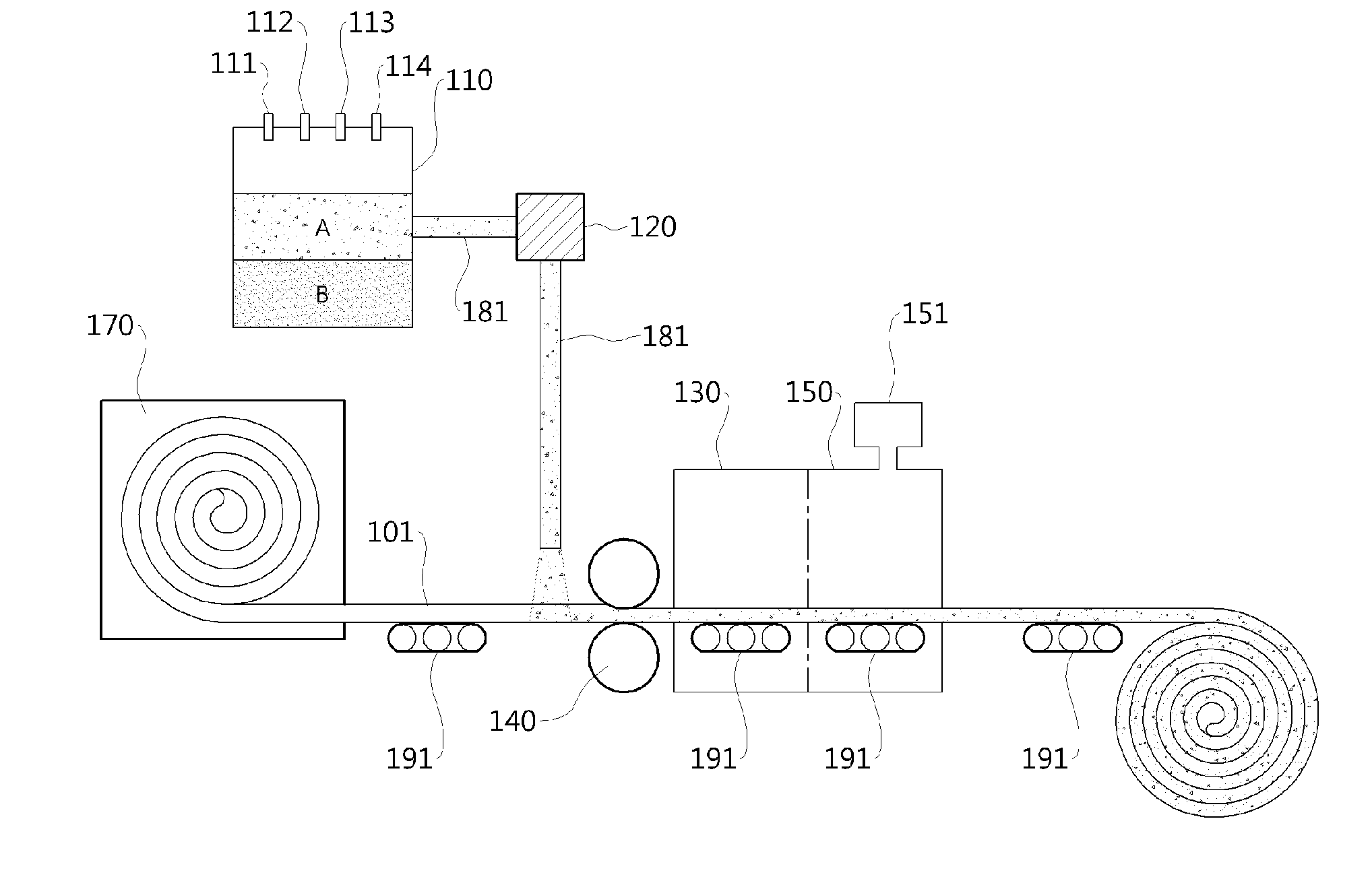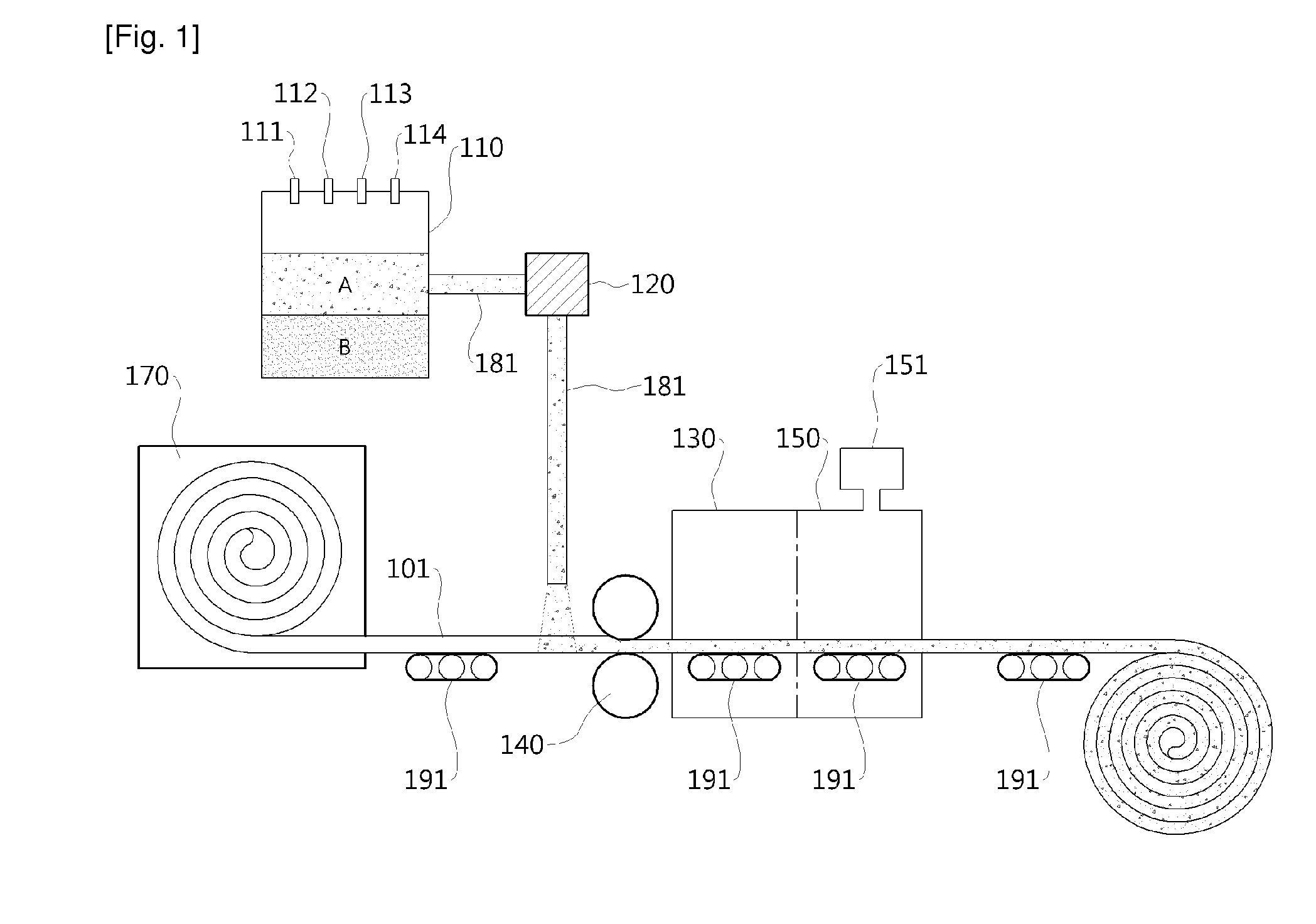Aerogel Mat and Manufacturing Method Thereof
a technology of aerogel and fibers, applied in the field of aerogel mats, can solve the problems of drying shrinkage, difficult to provide the characteristics of aerogel, and complicated process, so as to improve the properties and content ratio of the aerogel, enhance the coupling to the fibers, and avoid fiber damage
- Summary
- Abstract
- Description
- Claims
- Application Information
AI Technical Summary
Benefits of technology
Problems solved by technology
Method used
Image
Examples
example 1
[0049]A water glass solution having silica as a main component was placed in a reactor. A speed-controllable stirrer for mixing the materials was installed in the reactor. 1M of chloric acid was added in a volume fraction of ⅓ of the water glass, and the mixture was stirred at a low speed for 2 minutes. To the sol thus produced, ethanol was added and stirred in a volume ratio of 1:1, to synthesize a wet gel. The silica surface of the wet gel was of a silanol group, in a hydrophilic-surfaced gel. Next, a modification reaction was performed to obtain a hydrophobic surface, the reaction taking place after sequentially adding isopropyl alcohol, hexane, and trimethylchlorosilane. As the hydrophilic gel was modified to have hydrophobicity, two solutions were separated in different layers. The upper solution was poured onto a fiber matrix having a size of 15 15 1.25 cm3 and a density of 0.1 g / mL. The fibers combined with gel were dried at a first temperature of normal temperature and at a ...
example 2
[0050]By substantially the same method as that in Example 1, the fibers stacked with hydrophobic gel were obtained. A certain amount of pressure was applied to the fibers to compress the fibers to a thickness of 1.25 cm. The compressed fiber sheet was dried in substantially the same way as in Example 1. For the analysis of the aerogel composite, the volume density of the final synthesized sheet and the volume percentage of the aerogel with respect to the fibers inside the aerogel mat are represented in Table 1.
example 3
[0051]By substantially the same method as that in Example 1, a hydrophobic gel was obtained. The upper solution was vaporized until the remaining volume was ½. As the hexane-based upper solution is vaporized, the mass ratio of the hydrophobic gel to the upper solution is increased. The processes of combining with the fibers and drying were performed in substantially the same way as in Example 1. The volume density of the final synthesized mat and the volume percentage of the aerogel with respect to the fibers inside the aerogel mat are represented in Table 1.
TABLE 1Mat DensityAerogel Volume PercentageExample[g / mL][%]Example 10.102 5.3Example 20.10210.8Example 30.10013.3
PUM
 Login to View More
Login to View More Abstract
Description
Claims
Application Information
 Login to View More
Login to View More - R&D
- Intellectual Property
- Life Sciences
- Materials
- Tech Scout
- Unparalleled Data Quality
- Higher Quality Content
- 60% Fewer Hallucinations
Browse by: Latest US Patents, China's latest patents, Technical Efficacy Thesaurus, Application Domain, Technology Topic, Popular Technical Reports.
© 2025 PatSnap. All rights reserved.Legal|Privacy policy|Modern Slavery Act Transparency Statement|Sitemap|About US| Contact US: help@patsnap.com



